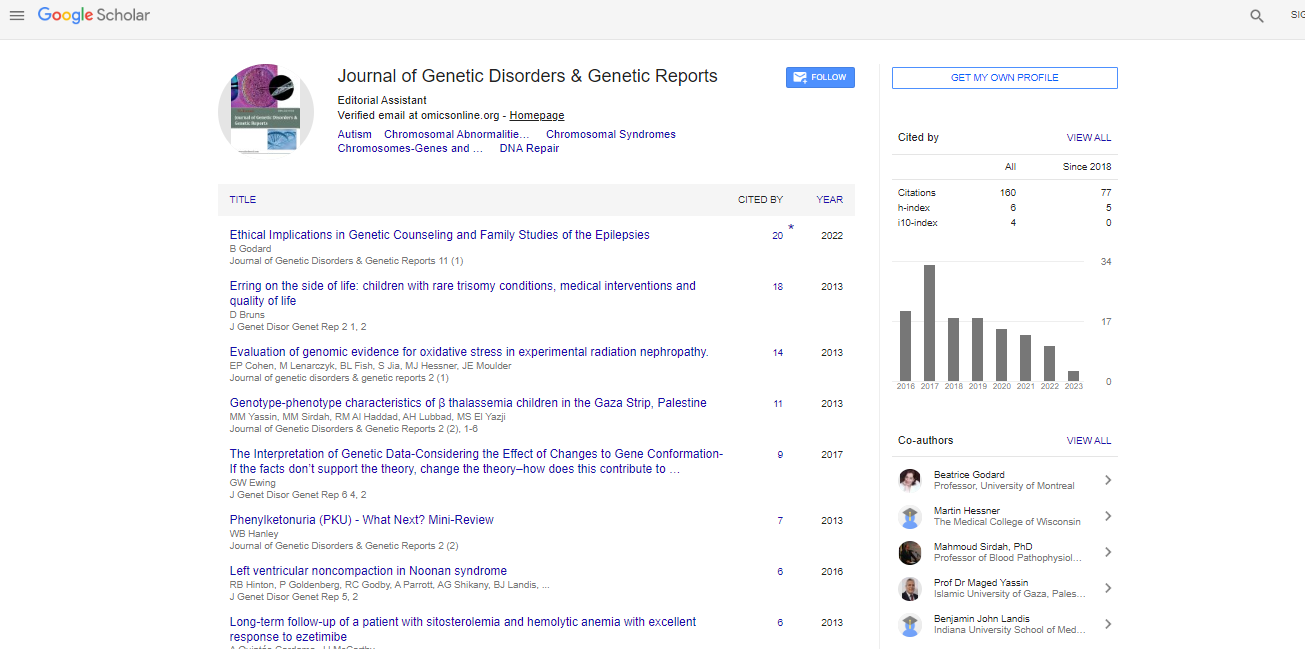Research Article, J Genet Disor Genet Rep Vol: 5 Issue: 1
Severe Expressive-Language Delay and Congenital Malformations in a Boy with Microduplication 7q11.23 Diagnosed by Molecular Cytogenetic Analysis
| Inesse Ben Abdallah Bouhjar1*, Amal Al Hashem2, Samia Sobki3, Brahim Tabarki2, Yasser Hassen Babair3 and Hatem Elghezal1 | |
| 1Cytogenetics and Molecular Cytogenetics Laboratory, Pathology and Laboratory Medicine Department, Prince Sultan Military Medical City, Riyadh, KSA | |
| 2Pediatric Department, Prince Sultan Military Medical City, Riyadh, KSA | |
| 3Central Military Laboratory and Blood Bank, Pathology and Laboratory Medicine Department, Prince Sultan Military Medical City, Riyadh, KSA | |
| Corresponding author : Inesse Ben Abdallah Bouhjar, PhD Cytogenetics and Molecular Cytogenetics Laboratory, Prince Sultan Military Medical City, Riyadh, KSA E-mail: inessebenabdallah@yahoo.fr |
|
| Received: March 27, 2014 Accepted: November 12, 2015 Published: November 18, 2015 | |
| Citation: Ben-Abdallah-Bouhjar I, Hashem AA, Sobki S, Tabarki B, Babair YH, et al. (2016) ISevere Expressive-Language Delay and Congenital Malformations in A Boy with Microduplication 7q11.23 Diagnosed by Molecular Cytogenetic Analysis. J Genet Disor Genet Rep 5:1. doi:10.4172/2327-5790.1000127 |
Abstract
We report a patient with speech delay and hydronephrosis ascertained with array-CGH screening of patients with abnormal neuronal migration and intellectual disability, having a 7q11.23 duplication reciprocal to the Williams-Beuren critical region (WBCR) deletion. Similarly to the reported patients, he showed serious difficulties in expressive language in the absence of severe intellectual disability and marked dysmorphic features. In addition to the abnormal development of the cerebral cortex with simplified gyral pattern and hydronephrosis. Chromosomal analysis showed normal karytoptype, so Micro-array comparative genomic hybridization was used to search for a possible cryptic anomaly. An interstitial duplication of 1.46 Mb was detected in 7q11.23. Fluorescence in situ hybridization confirmed the diagnosis, revealing a tandem duplication of the Williams-Beuren critical region. Our study provides an additional case for better understanding and delineating the duplication 7q11.23. We thus performed a genotype-phenotype correlation analysis to ascertain the contribution of 7q11.23 to the clinical features of our patient.
 Spanish
Spanish  Chinese
Chinese  Russian
Russian  German
German  French
French  Japanese
Japanese  Portuguese
Portuguese  Hindi
Hindi 



